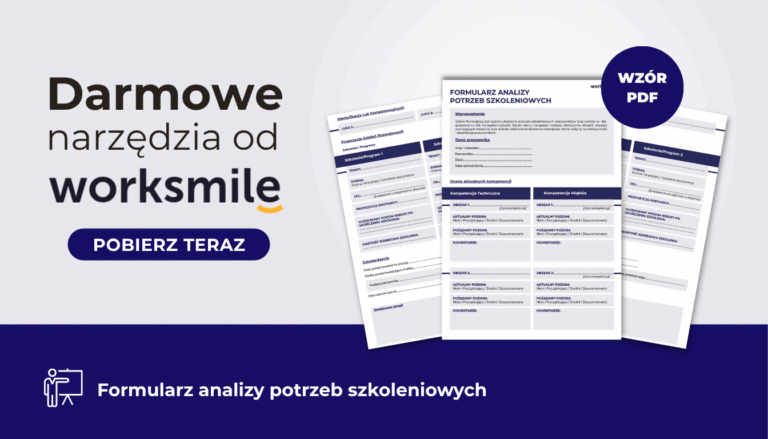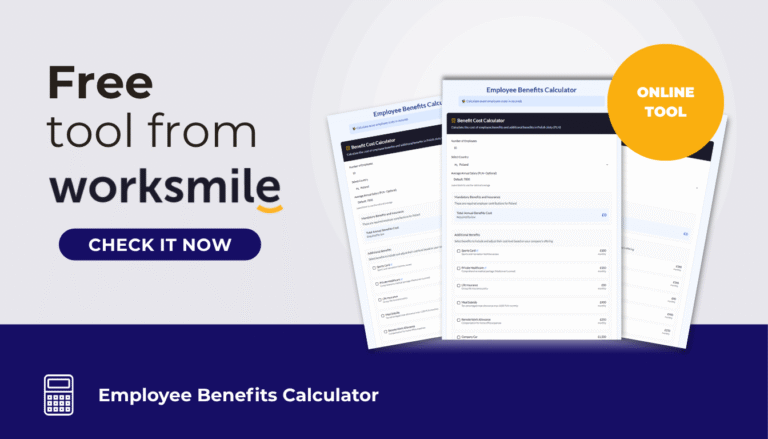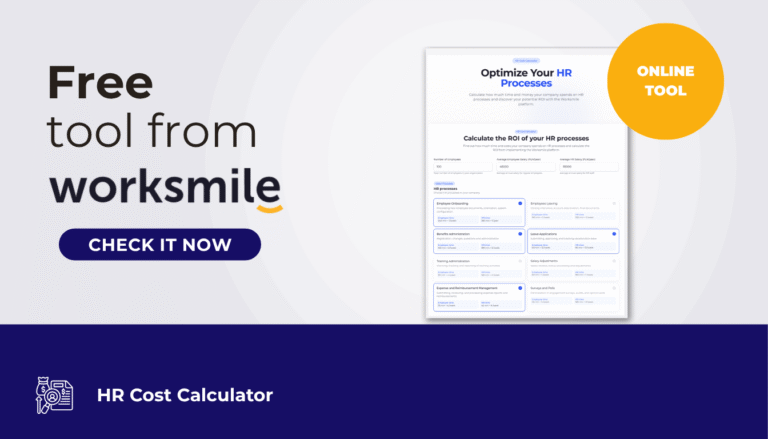Wondering how much HR processes such as employee onboarding, benefits administration or vacation request management actually cost your company? Learn how to properly measure HR costs, what metrics to take into account, and how to effectively calculate potential savings and real return on investment (ROI).
What are HR costs and why should they be counted?
HR processes are often treated as a purely operational area, meanwhile they are a significant fixed cost for most organizations. Every company, regardless of industry, with a growing workforce, faces the need to measure and analyze HR costs. In the traditional approach, a significant portion of these costs is ignored or underestimated. Meanwhile, a proper analysis of HR costs allows you to accurately assess the economic efficiency of the HR department and identify areas for improvement. Key here are personnel costs (salaries of specialists, recruiters or HR administrators), working time costs and the cost of implementing inefficient administrative solutions. Only their conscious consideration allows you to manage your HR department in a purposeful and cost-effective manner.
What HR processes are worth analyzing from a cost perspective?
HR costs are more easily analyzed by separating out key HR processes. The biggest consumers of time and resources in HR are often onboarding processes (induction of new employees), benefits administration, handling employee departures, vacation requests, training administration and salary adjustments. Equally significant costs are HR data reporting and analysis, and the implementation of employee surveys and satisfaction surveys. Knowing the average annual cost of such processes per employee – it is easy to identify areas that need optimization. By conducting a precise cost calculation, we can quickly assess the efficiency of the HR department and clearly determine the return on investment in HR technology.
How to use the Employee Benefits Calculator?
Using the calculator is simple and intuitive:
- You enter the number of employees
- You choose the country (e.g. Poland, Germany, Czech Republic – the tool supports different countries!)
- You can enter the average salary or allow the use of default values for the selected country
- You select additional benefits offered by your company
- You get a clear report with estimation of monthly and annual costs for each employee.
So in a few seconds you will know what the actual cost of employment will be, as well as which salary components generate the biggest expenses for you.
How to calculate the real cost of HR processes?
To accurately count the cost of HR processes, it is not enough to look only at the salaries of the HR team. The following indicators must also be accurately considered:
- Time spent on a given task by an HR employee (HR specialist).
- The engagement time of other company employees involved in a given process, such as the time spent on onboarding documentation.
- Average annual gross salaries of HR specialists and employees from other departments participating in the processes.
- Costs associated with paper administration: printing, document archiving, storage and maintenance of administrative infrastructure.
Calculating HR costs using the calculator requires gathering data such as average salaries of HR specialists, average salaries of employees, number of employees and time consumption of each selected HR process. With this information, we can get an accurate picture of HR administration costs.
HR process optimization - where to look for potential savings?
The main potential for increasing the efficiency of HR processes lies in digitizing them and optimizing communication between HR and employees. The most frequently identified areas with the potential to make real savings are:
- Digitizing documents and switching to electronic information flow.
- Automating repetitive processes such as issuing certificates, handling vacation requests and administering employee benefits.
- Standardizing onboarding and automated satisfaction surveys to respond quickly to potential employment problems.
- Improved monitoring of administrative processes, implementation of electronic leave and benefit management.
Implementation of selected digital solutions optimizes personnel costs and reduces the time-consumption of individual procedures by up to several tens of percent per year, providing real savings in the company’s budget.
What does ROI say in the context of HR?
ROI, or return on investment, is an indicator by which a company can pinpoint how much it stands to gain by investing in improving or automating selected HR processes. The higher the ROI, the more favorable the investment for the company. Using the HR cost calculator allows you to quickly compare the existing costs of manual administrative processes with the costs of implementing systemic HR solutions. This, in turn, allows you to make informed investment decisions and measure savings over time – both financial and operational.
Summary - why is it important to conduct HR cost analysis?
Accurate analysis of HR costs helps HR departments make better financial decisions and effectively manage team time. With the HR cost calculator, you will clearly see which HR processes generate the highest expenses in your company and take measures to optimize them. By calculating ROI, you will consciously approach the topic of investment in technology and automation of HR processes. This approach not only provides long-term savings, but also improves workflow and the overall comfort of HR employees, who can focus on strategic tasks rather than repetitive administrative tasks.



